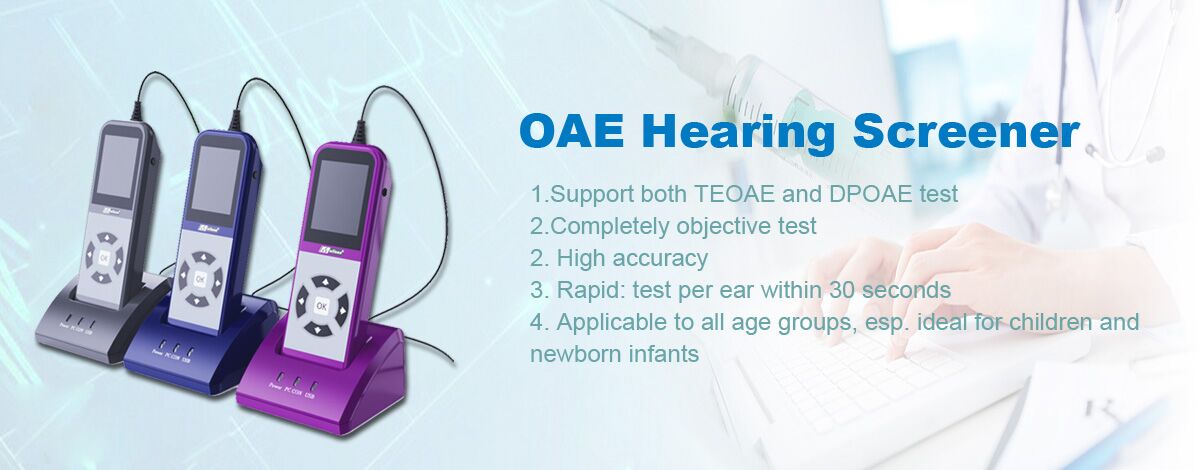Otoacoustic Emissions OAE
Basic principles of OAE
Otoacoustic emission is a kind of audio energy produced in the cochlea and conducted through the ossicular chain and tympanic membrane to release the human external auditory meatus. This mechanical activity helps to make the cochlear tuning more precise and can directly reflect the functional status of the outer hair cells. The two most commonly used evoked otoacoustic emissions in the clinic are distortion product otoacoustic emissions DPOAE and transient evoked otoacoustic emissions TEOAE.

Clinical application of OAE
Diagnosis of Meniere’s disease: Meniere’s disease occurs in the cochlea, so its pathological changes can be manifested by otoacoustic emission. The OAE performance of the disease is mainly due to the weakened low-frequency response, which corresponds to the range of hearing loss in pure tone audiograms. . As hearing loss worsens, the OAE response threshold increases, and the detection rate drops to disappear;
Dynamic monitoring of sudden hearing loss: When the hearing threshold of sudden hearing loss exceeds 40~50dB HL, the otoacoustic emission will disappear, but during the recovery process, the recovery of the induced otoacoustic emission response is earlier than the pure tone hearing recovery.
Cochlear tinnitus: It can be shown in the results of otoacoustic emissions. Only when the cause of tinnitus is caused by abnormal vibration of the cochlear basement membrane, the frequency of tinnitus will be unified with the frequency of spontaneous otoacoustic emissions.
Newborn hearing screening (Now the newborn baby in the hospital has already been screened)
Otoacoustic emission can also be used for localization diagnosis of sensorineural hearing loss, auxiliary diagnosis of auditory neuropathy, audiological testing of harmful auditory factors, occupational disease protection, geriatric disease research, etc.
